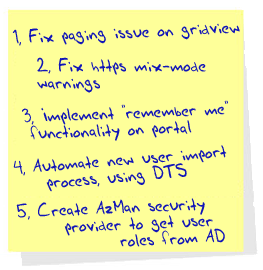Requirements gathering the right way
“Good product managers do not just gather requirements — they understand unmet needs, existing problems, and opportunities for improvement…”
– Jeff Lash, How to be Good Product Manager
Even though the negative implications of poorly structured requirements gathering process and management strategy are clearly evident, organizations continue to use ill-suited tools to manage product requirements. A study conducted by Aberdeen in 2010, revealed that close to “70% of companies are still on a manual process”. They are using tools such as whiteboards, spreadsheets, index cards and (GASP) sticky notes, to manage their product innovation process across the  organization. This very ineffective method for requirements gathering has created, for many, more grief than success.
organization. This very ineffective method for requirements gathering has created, for many, more grief than success.
There are several disadvantages of using manual methods. First, manual requirements gathering limits the ability of product managers to make accurate, higher-level, product-related decisions, and to go beyond the requirements gathering stage. In the article, Stop Gathering Requirements, Jeff Lash explains that a good product manager “doesn’t just stop at requirements gathering… [but]… adds value through insight and understanding, by making decisions about priorities and focus”.
Manual methods can no longer support the product manager’s decision-making process and do little to contribute to the success of product innovation efforts. Organizations need to use powerful social tools capable of:
- Managing and prioritizing requirements
- Linking ideation to requirements
- Analyzing requirements across valuable metrics
- Identifying and linking dependencies
Failure to effectively control your product requirements gathering may result in considerable waste of time and resources, project over-runs, high customer dissatisfaction and lost opportunities for innovation. If these are undesirable outcomes for your organization, then you need to start using web-based social tools that allow for transparency, collaboration, visibility and integration across product development activities.
Spreadsheets and sticky notes are just not going to cut it anymore.
Related blog posts:
Project estimation: Better from the bottom-up
Five Software Requirements Process Facilitation Tips
OneDesk as a requirements definition software
How to prioritize requirements with OneDesk
